This week our Reggio approach focuses on the infinite possibilities of learning in nature.
In addition to the documented benefits of healthy living, enhanced mood and cooperation, increased agility, physical strength and large motor skills; learning in nature provides stimulation of all the senses and multiple opportunities to see relationships in our world. It might help to see learning in nature as it is broken down into the traditional learning categories.
Language and literacy relates to the hundred languages of children (from our first letter), and how children learn and express themselves through all the senses. They hear, see, smell and feel sounds, rhythms and patterns in nature. They transform their investigations through stories, projects, drawing, movement and dance.
In math, the natural world provides rich opportunities for important cognitive development – naming, counting, sorting, counting and classifying. Again, children experience patterns and sequences and they investigate and compare sizes, shapes and colors.
Science offers opportunities for complex thinking such as predictions, hypothesizing and synthesis. What happens when I add water to sand? How can I construct a house of sticks? How many of us holding hands will it take to reach around that large tree trunk?
Social studies in nature leads us to investigations about communities, relationships and life cycles.
When we posted our blog at noon last Friday we were about to have lunch and, after rest, walk to the pond. Wonderful opportunities opened up for us! At our all-school picnic, the 6th graders served us and ate with us. At the pond we encountered 9th graders who interacted with us, playing, talking and fully engaging in nature play for a multidimensional learning experience. Your children learned about cooperation, community building, empathy and relationships in what became a spontaneous activity. Authentic learning is guided by the structure and support of teachers who are able to give it the time and flexibility it needs to unfold naturally.
We started this week with a rereading of our story about bees. This was a follow-up to our school assembly on the first day when we had a beekeeper come and talk to us! Our focus was on the roles of bees in a community. This led to our discussion of our job chart and the chores we will do as we participate in the roles and responsibilities of our classroom community. One of these chores will be attendance. Photos of individual children will help them help us take attendance. They can “read” the photos and mark who is here. We began to learn about this process this week.
Did you know that Tuesday was International Teddy Bear Day? It was fun to incorporate teddy bears into our morning greeting!
In addition to greetings, we discuss the weather and our activities and chores for the day. Every day there is one special subject – PE, music or library. Next week we will ease into our French with morning greetings. Because this will be an in-class special, we will have the luxury of incorporating French within the flow of the day. Rather than a concentrated 30 minutes twice a week, for example, we may want to have more frequent 10-minute lessons.
Speaking of mornings, we know your children are young, and that they should not feel rushed. We hope you can work with us to find a balance between getting up and out in the morning, and giving them the important opportunity to start the day with their classmates in morning circle. We are all served well when we can start the day together. Democratic living in a community is one of our goals and we want your children to be full participants as much as possible as the day unfolds.
We began this week with individual choices, and your children chose to work at an easel, to draw under the table, and to play with blocks, to name a few.
Most exciting of all was our nature walk on Monday. We had a purpose, which was to each find a stick with a “Y” shape to make a nature catcher. We were busy little bees as we searched for (and found!) our sticks. Such intense looking. Some children were silent and concentrated. Others chattered nonstop. All found what was a comfortable way for them to fully engage in this activity. And then, a snake slithered across our path!
Throughout the week we have continued our nature investigations and have been busy gathering objects in nature for our nature catchers.
We have also begun self-portraits to build our powers of observation and awareness of ourselves. These and other of the children’s creations will be displayed in the classroom.
We are keeping our displays child-centered, meaning it is the children’s work that will be featured, as opposed to commercial or teacher-made displays. We also believe that it is the process that is developmentally important for children rather than the end product, per se. As we get more into our routines, you will begin to see documentation of how your children envision, plan and create their work.
Next week we will continue building on routines and adding new choices. As much as possible we will continue to be outside. We will begin to listen for sounds in nature, and we may transform what we hear through drawing and painting. Bringing the outdoors inside activities will include sorting our stones by size and shapes and possibly creating patterns and compositions with them.
Ms Kane and Ms S.

This blog is getting better each week! Last night’s session serves to provide good background to better appreciate what is in the weekly blog. Thanks!
One question, do you get lots of whys from the curious minds? How do you tackle the never ending whys?